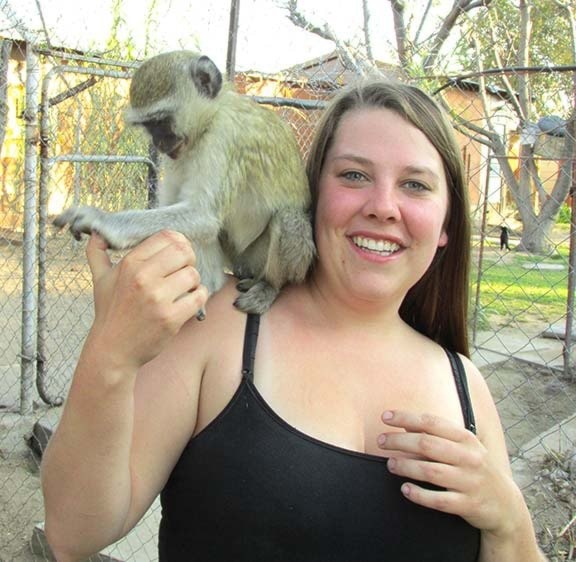Drew Prinn has always had a love of animals, so when an opportunity to go and volunteer in Africa came up, she took it.
Prinn, who is from Cranbrook and preparing to enter her second year of Animal Health Technology at Thompson Rivers University, was told of the volunteering opportunity by a professor, as students had gone to the Harnas Wildlife Foundation in Namibia a few years earlier, and had a great experience.
Prinn said it didn't take much time to decide.
"I looked at it and decided if I'm going to do something, it's got to be this year," she said. "It looked like an awesome opportunity so I took a chance and I jumped on it and it turned out to be the right decision."
So did she like the trip?
"Like it is an understatement," she said, adding that her month there was way too short.
Harnas is a large animal game-reserve and wildlife rehab centre that allows for volunteers to get hands-on experience working with lions, cheetahs and others.
"The first four days we learned how to prepare the food, and then after that we got to do the fun stuff like tour, research and all that," she said. "So we had an understanding of what we feed (the animals) and why before we got off to do the fun stuff."
The volunteers were divided up into four teams and each team was responsible for a group of animals.
"For example, my group was responsible for a cheetah, leopard, 61 mongooses, two meerkats, three vervet monkeys, three donkeys, eight turkeys, eight ducks, seven cats, five dogs and then I did the horses," she said, noting that she specializes in horses. "There were four teams, so you can imagine the size of the farm and the animals that were on it."
The animals themselves arrive injured or orphaned, and as they come in they are evaluated by the staff to determine which tier they go into.
“We have a three tiered system,” she said. “Tier one was on the farm itself, so that was being fed every day and being interacted with every day by the volunteers and co-ordinators. That’s the ones we feed and do food prep and stuff and are responsible for.”
Tier two animals are fed on tours once a day. That included the lions, the wild dogs, the wild cheetahs and leopards.
Tier three is an 8,000 hectare area where the animals are self-sustaining.
“That’s what we did research on,” Prinn said. “We’d locate, observe and evaluate living conditions and whether they made a kill or not in the last few days.”
She said she learned a lot on the trip.
“I would very much love to go back and if things go my way I’ll go back next year and have a job from there,” she said, explaining that she may have employment there because of her experience with horses, if the visa requirements can be met.
“I was always into animals as a kid and got really heavy into horses so horses are kind of my area of expertise,” she said. “Through this program you’re with animals every day and the learning curve was steep but it was awesome.”
She would recommend the Harnas experience to anyone.
For more information go to www.harnas.org.
